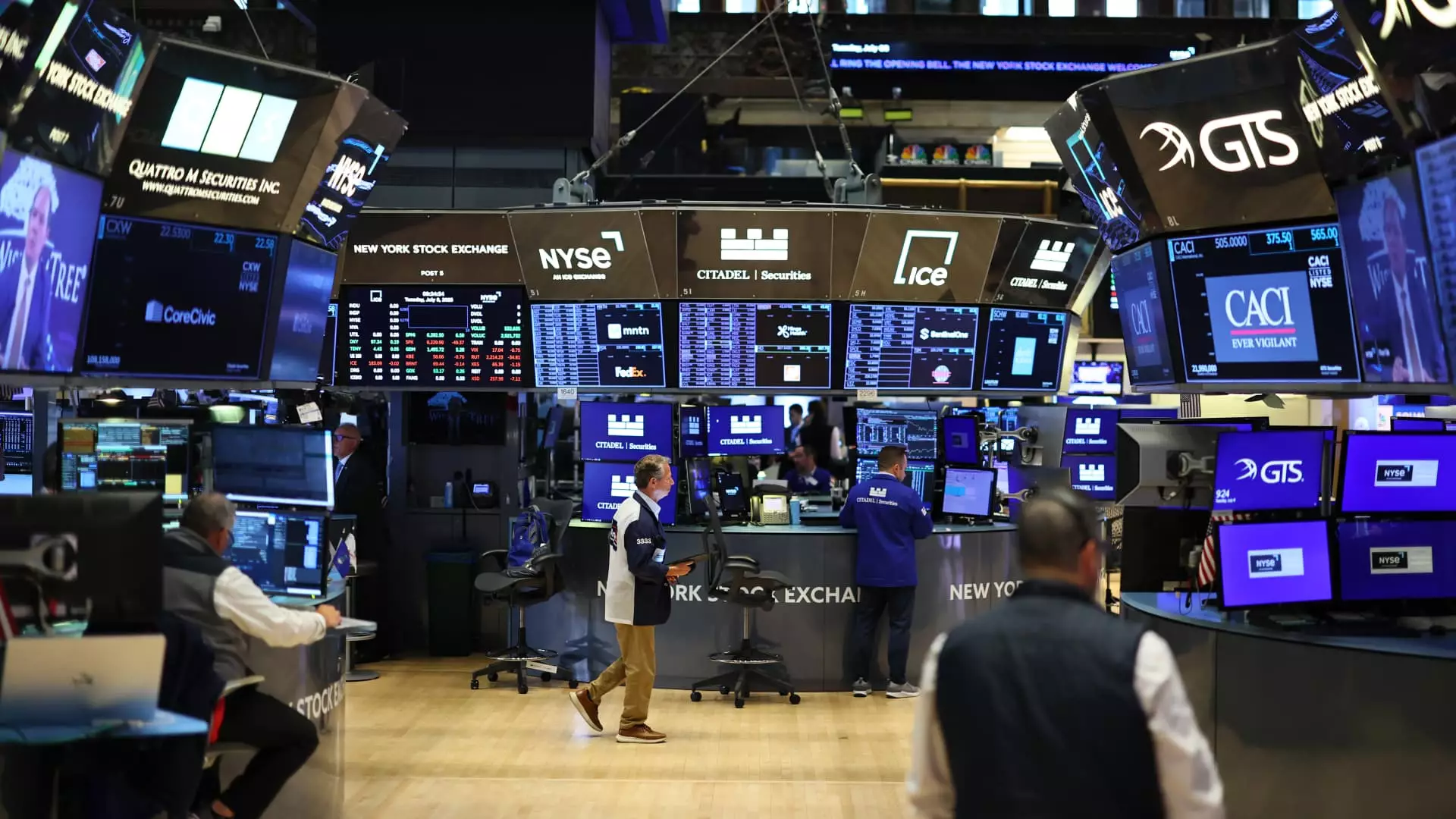As the global economy teeters on the brink of renewed uncertainty, investors are faced with a dilemma: navigate the turbulent waters of a slowing growth environment or cling to the safety of fixed income assets. Recent insights from industry giants, Vanguard and BlackRock, suggest a pivotal shift in strategy—embracing conservative allocations while positioning for resilience. The prevailing message is clear: optimism may be premature, but calculated caution can pave the way for long-term gains. This nuanced perspective challenges the traditional rally-driven mindset, urging investors to reconsider their approaches and prepare for a landscape dominated by volatility and innovation.
Expect Growth Slowdown and Its Implications for Markets
Vanguard’s Roger Hallam underscores a notable slowdown in economic growth for the latter half of the year. His prediction, rooted in the current trajectory of the labor market and inflationary trends, hints at a delicate balancing act by the Federal Reserve. As inflation stubbornly persists, the central bank might pivot toward supporting employment, even at the risk of delaying rate hikes or initiating rate cuts. Such monetary policy shifts are poised to influence bond markets positively, offering a haven amid stock market turbulence. In essence, a cautious yet opportunistic stance in fixed income investments emerges as a strategic necessity. Investors should recognize that the bond market, especially U.S. Treasurys, is set to be a bastion of stability in an uncertain economic climate.
Bond Markets as the Anchor in Volatile Times
The launch of Vanguard’s new bond ETFs, with a focus on government securities, epitomizes a broader shift toward safety. Given the current yield environment—where the 10-year Treasury yield has declined from 4.57% to around 4.4%—investors are increasingly seeking refuge in government debt. This move reflects a consensus that bonds will likely outperform equities in the coming months, as economic growth stagnates and risk premiums escalate. These fixed income instruments are not merely defensive tools but now serve as the foundation for a strategic, well-balanced portfolio. The emphasis on Treasury exposure indicates a broader conviction that government securities can insulate portfolios from looming economic headwinds, making them a core component for risk-averse investors.
Adopting a Barbell Strategy: Balancing Risks and Rewards
BlackRock’s Jay Jacobs advocates for a ‘barbell’ approach—an investment strategy combining safety with aggressive growth prospects. This approach involves maintaining a significant cash position while gradually entering the equity markets, especially through hedged or buffer ETFs. These ETFs, designed with downside protection mechanisms, allow investors to participate in potential upside while limiting downside losses. The recent performance of funds like iShares Large Cap Max Buffer ETF, which has already gained 5% in 2025, exemplifies their utility in navigating uncertain environments. Jacobs’s emphasis on macro themes like artificial intelligence and infrastructure reflects a broader understanding that innovation and long-term trends remain vital for growth, even amid economic slowing.
Strategic Choices in a Fragmenting Global Landscape
The geopolitical arena further complicates the investment climate. Fragmentation and geopolitical tensions are reshaping markets, prompting investors to look beyond traditional sectors for growth. Infrastructure emerges as a strategic play, especially in the United States, where substantial government investment is expected to stimulate economic resilience. Such macro themes are considered potent bets—anchoring portfolios in sectors that are likely to benefit from long-term trends despite short-term instability. Embracing these themes requires conviction and a willingness to look beyond immediate market fears, recognizing that innovation-driven sectors may hold the key to sustained growth in an increasingly uncertain world.
The Reality of a Cautiously Optimistic Future
Ultimately, the current investment landscape calls for a recalibration of expectations. Growth may slow, but that does not preclude opportunity. Instead, it demands that investors adopt a more refined approach—favoring fixed income, employing hedging strategies, and selectively capitalizing on macroeconomic themes. While risk remains, so does the potential for strategic positioning to generate alpha. The coming months will test the resilience of these approaches, but those willing to adjust their mindsets and embrace a more cautious yet strategic outlook are poised to navigate the complexities of a shifting financial world successfully. In this environment, prudence, patience, and a keen eye on long-term macro trends will be the differentiators between those who capitulate and those who capitalize.

